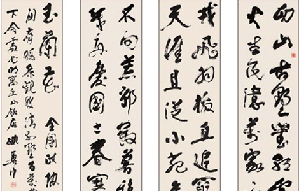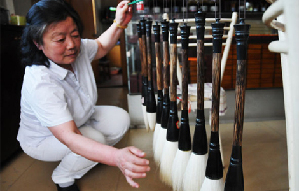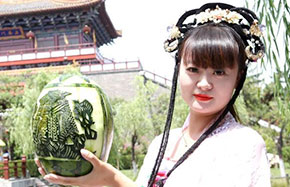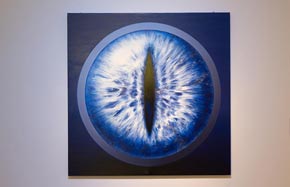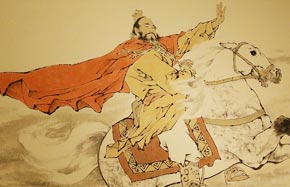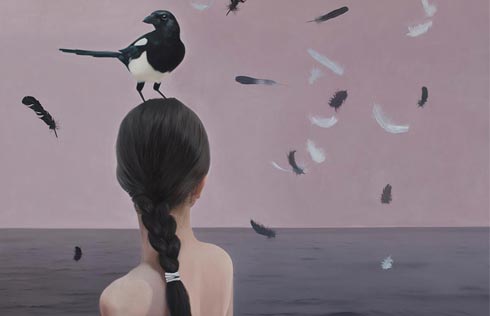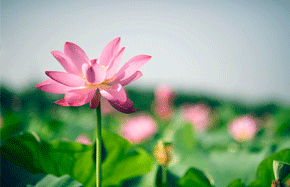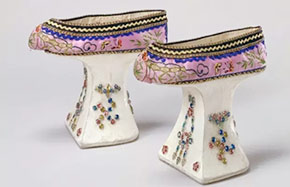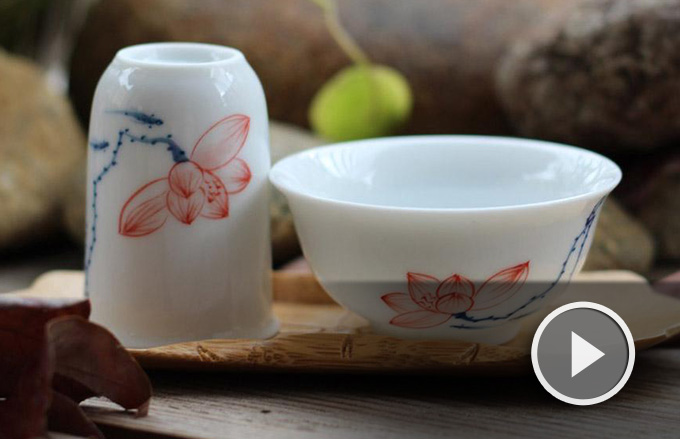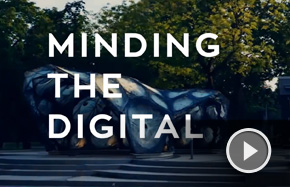Characters count
Zhu soon fell in love with ink and called for more colleagues' participation. A fad finally became their longtime fashion.
"Office work is mundane and many of us were introverts," Zhu says. "However, calligraphy restores our self-confidence. People will respect you more when you write beautiful characters. Couples will also quarrel much less when they abandon playing mahjong in their spare time."
Her bureau is one of the city's most calligraphy-fanatical institutions. Nearly half of its 50 women on staff have taken up writing brushes. They launched the Wuhai Women Calligraphers' Association in 2002, only one of numerous similar organizations in the city.
"Maybe I will consider selling my pieces after retirement," giggles Zhu, now a member of the China Calligraphers' Association. "But I still have to improve my skills. It is common that I write until suddenly I find it is past midnight."
Zhu spends about 14,000 yuan ($2,280) a year, almost half of her annual income, hiring teachers from Beijing for further study. She appreciates that her husband is supportive and never complains.
The city's name means "a black sea" in Chinese, says Guo Zhenlian, chairman of Federation of Literary and Arts Circles in Wuhai. "We bowed to dig coal for decades, but it's time to switch to ink now," he says.
According to Guo, the municipal government allocates about 5 million yuan a year to promote calligraphy, more than the budget used for festivals and special events. She proudly claims that no other Chinese cities were likely to spend that much for similar work.
"Calligraphy may be only a line on the business cards of cities with long histories and rich cultural heritages, but it is the business card itself for Wuhai," Guo says. "So, it looks brighter here."
A rising star has gained them a new fame. A Henan province-native Feng Yinqiang, 44, moved to Wuhai in 2010, enticed by its passion for calligraphy and freer lifestyle than in Beijing, where he ran a studio for years. One of his works topped the Lanting Awards, the highest honor in China's calligraphy circle, in 2012, bringing that laurel to Inner Mongolia for the first time.
"Calligraphy represented social elites' noble characteristics in ancient times, and it continues to impart positive values to the public," he says. "It aims to pursue a certain spirit rather than simply chasing awards."
He appreciates that Wuhai has a mix of professionals and amateurs.
Feng now runs a studio in a mall called Phoenix Calligraphy and Painting City, which opened in April 2012. This place has become a hub for more than 40 calligraphers.
However, Wang Zhenning, managing director of the mall, reckons that lack of a market-driven system has damped an ambitious dream for the city to build an even bigger calligraphy center.
Since most local calligraphers have regular jobs and do not live on these works, he says, they hesitate to lower the price. A simple piece usually sells for more than 1,000 yuan, but locals wages are not high enough to support a booming market. That could ultimately restrict the influence of Wuhai's calligraphy as a whole.
"A national city of calligraphy means more than that many locals practice writing," he says. "People need to be able to appreciate and to afford the works at the same time."
| Still strong at 100 | Master strokes |






